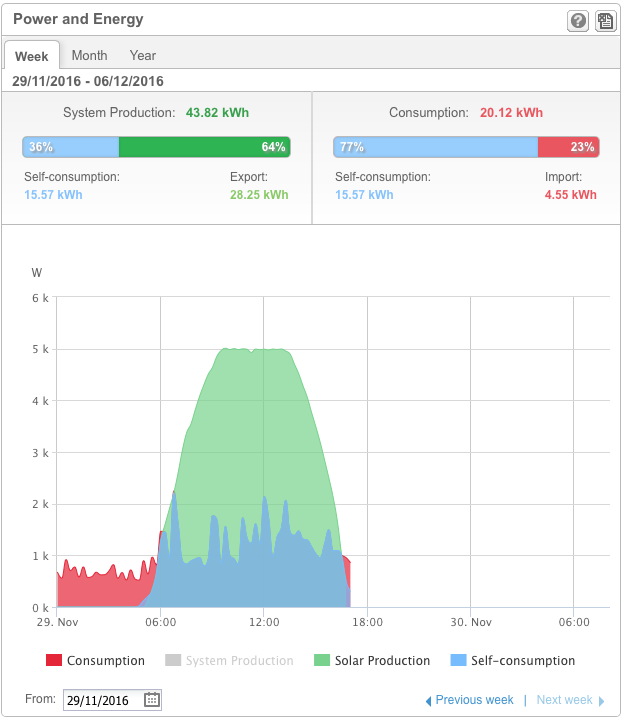Propeller Going Green
21 November 2016
As any digital business will tell you, one of the largest overheads to contend with is power. In addition to lighting and heating or cooling, online businesses are typically running desktops and multiple screens, laptops, portable devices, routers, switches, backup drives, some music and of course in our case, an espresso machine and grinder : )
Propeller have always worked to build a resilient, adaptable business and an important aspect of this is reducing our environmental impact and with it our overheads; installing LED lighting throughout as early as 2011, installing good insulation, reducing water wastage, employing a mostly paperless workflow and with a local focus reducing travel requirements or using online communication. In terms of cooling, in contrast to whole of building installations, Propeller have installed individual, appropriately sized and efficient Mitsubishi split-system air-conditioners which are only operated in occupied rooms as and when required. Other minor changes to our behaviour such as shutting down all office equipment at days end instead of leaving things on standby overnight have helped us to reduce our power usage as much as possible.
In the second half of 2016 we decided to take the next step and install rooftop solar.
After wasting our time with some larger national installers and seeking referrals from other local businesses, we called in Peter Sallans, an Energy Consultant from Brisbane-based CSA Services. Established in 2007, CSA Services have not only installed rooftop solar to hundreds of domestic properties but have also worked on large-scale commercial solar installations such as the 741kW array at Ikea Logan and a 521kW installation at the Sydney Darling Harbour Convention Centre.
Given our location in Capalaba, South East Queensland (average temperature 30C) our summer cooling requirements are high resulting in some eye-watering power bills. After perusing our last bill, Peter suggested that we must be on the wall in the Energex Hall of Fame…
Our requirement therefore was to markedly reduce our grid energy requirements but also to prepare for providing battery power to offset daytime generation to evening, nighttime usage and for days when generation is poor due to cloud etc. A secondary requirement was energy security - providing continuity in the event of a grid failure during the frequent Brisbane afternoon summer storms.
Not having used solar previously and being large consumers of daytime power, especially during hot days, we were unsure just how much the solar system could produce and how much would be left to charge and cycle a battery system so the installation was to be undertaken in two phases - firstly the solar system itself including an energy monitoring system which would provide us with enough data upon which to base the phase two battery decision, or not.
Peter designed a 6.625kW system comprising of 25 Canadian Solar panels and, to provide us with the future battery connection option, specified a SolarEdge StorEdge backup inverter system and energy monitor. We also relocated and updated our meter box and installed cabling for future backup circuits and distribution boxes.
CSA took care of most of the Governmental paperwork and the entire installation, including meter box relocation was carried out with a minimum of fuss and limited downtime over two days.
 The SolarEdge system includes DC Optimisers which allow the system to bring the panel arrays up to production more quickly, operate more efficiently over a longer period from early morning to late evening and also provide individual panel diagnostics via the SolarEdge Moitoring system. SolarEdge provide an iOS app which gives us an at-a-glance view of our energy production and usage patterns. Knowing when and how much the system is producing has allowed us to schedule applicance usage such as the dishwasher, washing machine, coffee machine and air-conditioning operation to coincide with peak solar production times, further reducing our dependency on grid power and cutting operating costs in the process.
The SolarEdge system includes DC Optimisers which allow the system to bring the panel arrays up to production more quickly, operate more efficiently over a longer period from early morning to late evening and also provide individual panel diagnostics via the SolarEdge Moitoring system. SolarEdge provide an iOS app which gives us an at-a-glance view of our energy production and usage patterns. Knowing when and how much the system is producing has allowed us to schedule applicance usage such as the dishwasher, washing machine, coffee machine and air-conditioning operation to coincide with peak solar production times, further reducing our dependency on grid power and cutting operating costs in the process.
Since installing the system in September our daily average production has been 40kWh, peaking on some days at over 44kWh and has yielded a total production to date of 2.38MWh, saving over 930kg of CO2 emissions. Our daily energy usage is roughly 15kWh during office hours resulting in us sending over 25kWh back to the grid on most days.
We dont have a power bill for this quarter to check yet but what we can see from the monitoring module is that the system entirely covers our daytime electricity usage and confirms that the investment in a battery system will allow us to further reduce our grid dependency and provide sufficient power to cover our out-of-production-hours usage. We'll report back as our system develops and when we have more long-term usage data.
Ultimately, going green is not only about the sustainability of the planet, but in reducing overheads and our impact on the environment, contributing greatly to the sustainability of our business. When you work with Propeller, you can be sure you are working with a sustainable and environmentally friendly business.
Where To From Here?
Feel free to give us a call, email, or use our contact form to discuss your project and how we can help you.



